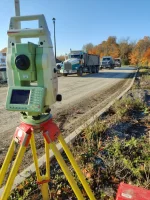- Joined
- Aug 24, 2021
- Messages
- 39
Which method would you choose to plumb in this compressor filter?
I was just going to tear into it tonight, but I got cold feet and thought I should ask first. It’s a Walker centrifugal water separator and it goes in between the output of the inter cooler and the input of the tank. So there is only a fairly short distance between those two and I don’t have a ton of options.
First option, cut out about 8” of the copper pipe connecting the output and input, thread (with sealant) 3/4” Shark Bite fittings into either side of the filter and then slip the copper pipe into the fittings on either side. Seems to be the easiest route. I did quite a bit of reading on this, many say they’re great and some say they aren’t. They’re rated for 250 psi, way more than what I’m running. I read where folks said they’ve had Shark Bites in the compressor piping for several years and they’ve performed flawlessly. To me it at least seems worth trying, but I can’t lose too much pipe.

Second option would be to cut the same 8” of pipe out, thread copper fittings into the filter and then sweat the 3/4” slip fittings into the pipe. The issue with this method is that I have to thread the slip to thread fittings into the filter first and then solder the slip joints. I haven’t gotten an answer or found one that says Teflon tape or PTFE thread compound (or the filter for that matter) would stand up to the heating of the joint with mapp gas. I see that they say around 400 degrees for the Teflon, but could it get higher than that? I know the solder melts at a lower point, but the joint will get quite a bit higher than the melting point.

I would remove the piping from the compressor, get everything setup and then put it back, but one, I’m worried about leaks at that point from compression fittings and two, to get proper access I’d have to move the compressor away from the wall and I can’t do that on my own, it weighs like 700-800 pounds.
Suggestions would be greatly appreciated!
Dan
I was just going to tear into it tonight, but I got cold feet and thought I should ask first. It’s a Walker centrifugal water separator and it goes in between the output of the inter cooler and the input of the tank. So there is only a fairly short distance between those two and I don’t have a ton of options.
First option, cut out about 8” of the copper pipe connecting the output and input, thread (with sealant) 3/4” Shark Bite fittings into either side of the filter and then slip the copper pipe into the fittings on either side. Seems to be the easiest route. I did quite a bit of reading on this, many say they’re great and some say they aren’t. They’re rated for 250 psi, way more than what I’m running. I read where folks said they’ve had Shark Bites in the compressor piping for several years and they’ve performed flawlessly. To me it at least seems worth trying, but I can’t lose too much pipe.
Second option would be to cut the same 8” of pipe out, thread copper fittings into the filter and then sweat the 3/4” slip fittings into the pipe. The issue with this method is that I have to thread the slip to thread fittings into the filter first and then solder the slip joints. I haven’t gotten an answer or found one that says Teflon tape or PTFE thread compound (or the filter for that matter) would stand up to the heating of the joint with mapp gas. I see that they say around 400 degrees for the Teflon, but could it get higher than that? I know the solder melts at a lower point, but the joint will get quite a bit higher than the melting point.
I would remove the piping from the compressor, get everything setup and then put it back, but one, I’m worried about leaks at that point from compression fittings and two, to get proper access I’d have to move the compressor away from the wall and I can’t do that on my own, it weighs like 700-800 pounds.
Suggestions would be greatly appreciated!
Dan

